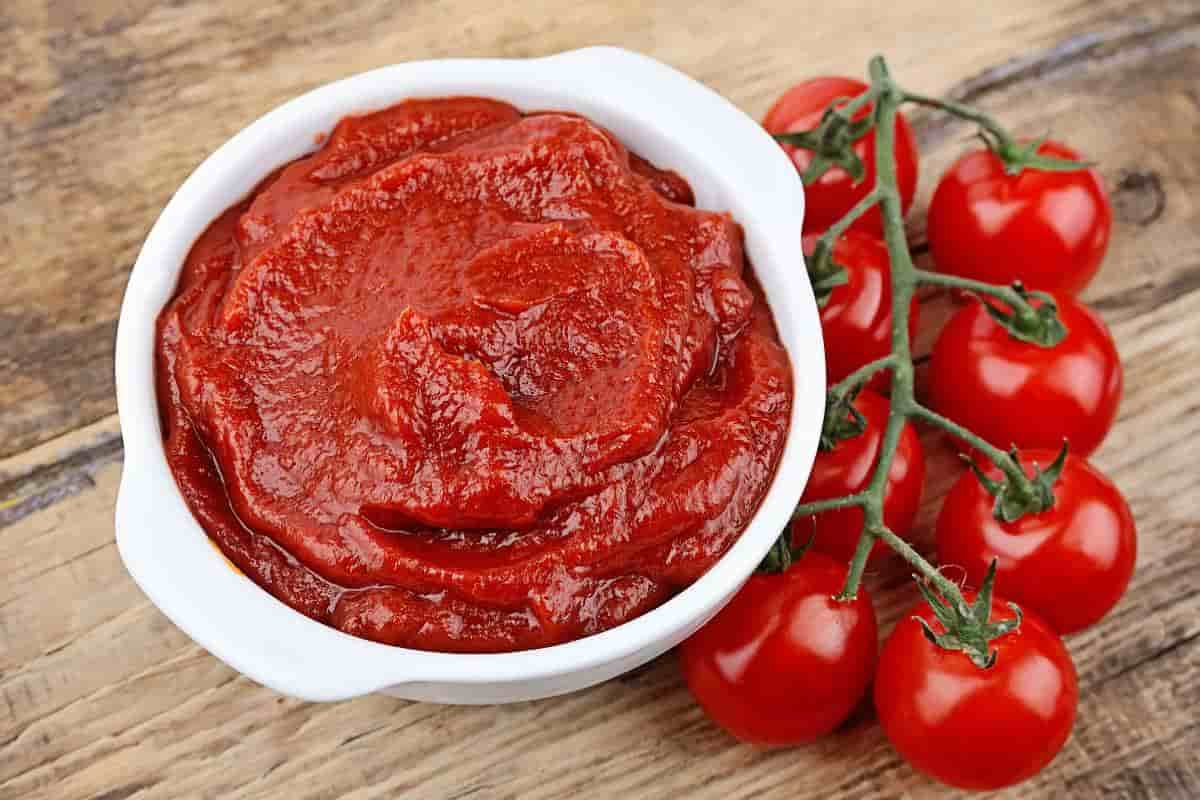Although it is a necessary ingredient in many dishes, the worst thing about tomato paste is that you just need a tablespoon or two of it for most dishes.
Expired canned tomato paste
After removing the amount of tomato paste that is required for the dish you are preparing from the container of tomato paste, you place the remaining tomato paste in the refrigerator. In addition to this, you make a promise to yourself to make use of the leftovers later in the week. After a week or two, you find that can of tomato paste that has only been partially opened, and you start to wonder if it has gone bad. The frustration of having to toss away unfinished tomato paste is something I am quite familiar with, just like everyone else. As a result of this, I made the decision to educate myself a little bit more on the storage, shelf life, and deterioration of tomato paste. As I progressed through the process, I picked up a few pointers that I would now like to share with you. If you think that might be interesting, continue reading. Tomato paste is often packaged in one of three different types of containers: tubes, glass jars, or cans. The guidelines for storing each one are virtually identical to one another. As long as the container has not been opened, it should be stored in a cold and dry place away from any sources of heat. Also, keep in mind that you shouldn’t leave a glass jar out in the open where the sun can directly hit it. Tomato paste should be stored in the kitchen’s pantry or a cupboard, at the very least. Simply check to see that the shelf or cabinet is not located in close proximity to a radiator or an oven. After the container of tomato paste has been opened, it needs to be kept in the refrigerator and covered securely whenever it is not being used. Cans are more difficult to seal than glass jars or tubes, which present no such difficulty. Sealing them effectively can be accomplished with either cling film or a plastic bag secured with a rubber band. You also have the option of transferring the remaining paste into a container that is airtight or a glass jar. 
Tomato paste use
You are well aware that tomato paste does not have a particularly lengthy shelf life, as it is only natural to assume. We are fortunate in that with only a modest amount of additional labor, and we can extend its shelf life by many months. Freezing tomato paste is an option that is always available. A disadvantage of defrosting the paste is that its quality does suffer from a marginal drop as a result of the process. Because prepared foods are where tomato paste is utilized the vast majority of the time, this relatively minor adjustment is unlikely to be noticed. There is a more effective method than simply placing any remaining paste in a safe container for the freezer and then putting the container in the freezer. Now place the meal in ice cube trays and place them in the freezer. Freezing food is made easier and requires much less cleaning when using ice cube trays and this is the proper way to accomplish it. The tray needs to have some paste added to it. When the ice cubes have finished setting, place the tray in the refrigerator for a few hours before moving it to the freezer. After removing the tray from the freezer, place the frozen cubes in a bag that can be frozen. You can put a label on it with your name and the current date if you wish. It is recommended that the freezer bag be positioned there. After the process itself is over, the only thing that remains to be done is to clean the ice cube trays. You can defrost the thing as much as you need to without bringing it all the way back to room temperature. If you are going to be using the paste in a recipe that is going to be prepared on the stove, you can frequently skip the step of defrosting it. 
Canned tomato paste
In the same way, other condiments, such as barbeque sauce, can readily be consumed months after their expiration date, so can canned tomato paste. Even if the jar has a defect, the paste can still be consumed without risk, despite the fact that its quality may deteriorate with prolonged storage. However, this does not mean that it is unsafe to do so. The amount of time that the paste is still useful after the container has been opened differs depending on the type of container. Tomato paste from a can keeps well in the refrigerator for up to seven days if it is properly packed and stored. In most cases, storing tomato paste in a container made of glass will allow it to maintain its freshness for an additional day or two. If you need the paste to last for a longer period of time, you have two alternatives to choose from; however, neither of these durations is especially impressive. The first thing you need to do is freeze it using the method I described in the introduction. The second choice is to buy tomato paste already packaged in tubs. Even after being opened, most jars of tomato paste still have a shelf life of at least 45 days without losing their quality. Even though the tomato paste might still be safe to consume after it has begun to run, it is typically recommended to throw it away after it reaches this stage. You don’t want to ruin an otherwise wonderful pasta dish with meatballs by using a subpar tomato paste because the dish won’t have nearly as much taste. You can always contact me for more information regarding these issues and similar inquiries such as quotations. 









Your comment submitted.